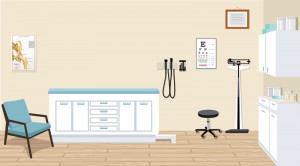Study finds large gaps between research and practice in ADHD diagnosis and treatment
 —
—
Most children with ADHD receive their care from community-based pediatricians. Given the large number of school-age children who require evaluation and treatment services for ADHD, and the adverse impact that poor quality care can have on children’s development, it is important for children to routinely receive care in the community that is consistent with best-practice guidelines.
The American Academy of Pediatrics has clearly recognized this and published guidelines for the evaluation of ADHD back in 2000; this was followed by a set of treatment guidelines in 2001. Based on data collected since then, these guidelines were modified in 2011.
Below is a brief summary of the key elements from these guidelines.
Evaluation Recommendations for school-age children
- Youth ages 4 through 18 years who present to their primary care clinician with academic or behavioral problems and symptoms of inattention, hyperactivity, or impulsivity should be evaluated for ADHD.
- Diagnosing ADHD requires determining that DSM criteria for the disorder have been met. Making this determination requires information to be obtained from parents or guardians, teachers, and others. Clinicians should rule out any alternative cause of the child’s ADHD symptoms. You can find here a review of DSM diagnostic criteria — these recently changed with the publication of DSM‑V.
- ADHD evaluations should include assessment for other conditions that may co-occur with ADHD, including emotional or behavioral (eg, anxiety, depressive, oppositional defiant, and conduct disorders), developmental (eg, learning and language disorders or other neurodevelopmental disorders), and physical (eg, tics, sleep apnea) conditions.
Treatment recommendations for school-age children
- Treatment and management of ADHD should reflect that it is a chronic condition and may impact children’s development and functioning over many years. Parents need to be supported in consistently implementing treatments for their child over an extended period.
- Specific treatment recommendations vary by the age of the child.
- For children ages 4–5, evidence-based parent- and/or teacher-administered behavior therapy should be the first line of treatment. Stimulant medication may be prescribed if improvement is not significant and there remain moderate-to-severe disturbances in the child’s function.
- For 6–11 year old children, FDA-approved medications for ADHD and/or evidence-based parent- and/or teacher-administered behavior therapy are the front line treatments for ADHD; ideally, these treatments would be combined. The school setting is an essential context for any treatment plan.
- For adolescents, FDA-approved medications should be prescribed with the adolescent’s assent. Behavior therapy may also be prescribed and will ideally be combined with medication.
Note that for all ages, family preference is an essential element in determining the treatment plan. For older children and adolescents, their preference should also be taken into account.
- When prescribing medication, clinicians should titrate doses of ADHD medication to achieve the maximum benefit with minimum side effects. Clinicians should inform parents and children that changing medication dose and/or medication may be necessary to determine the optimal medication/dose and that this can require several months. -
- It is important for medication efficacy to be systematically monitored at regular intervals so that adjustments can be made when indicated.
How well are these recommendations being followed?
The best data on this question comes from a study published online recently in Pediatrics [Epstein, et al. (2014). Variability in ADHD care in community-based pediatric practices. Pediatrics] The authors recruited 184 pediatricians across 50 pediatric practices in Central and Northern Ohio for a study focused on improving community-based care for children with ADHD. For each pediatrician, 10 charts for patients with an ADHD diagnosis code were randomly selected so that the assessment and treatment procedures received by those patients could be reviewed.
For each chart reviewed, the researchers documented the following:
- Presence of parent and teacher ratings of ADHD symptoms during the assessment.
- Documentation that the child met DSM criteria for ADHD.
- Documentation of whether ADHD medication was prescribed.
- Documentation that behavior therapy was suggested.
- Date of initial ADHD medication prescription.
- Dates of ADHD-related treatment visits or other contacts, e.g., phone, email.
- Dates of collection for parent and teacher ADHD rating scales.
Results
- Evidence that DSM criteria for ADHD were met was documented in approximately 70% of patients’ charts. Thus, for nearly one-third of children diagnosed with ADHD, evidence that DSM criteria were met was missing.
- ADHD rating scales were collected from parents and teachers for roughly 56% of youth with an ADHD diagnosis. Presumably, pediatricians would have obtained information about ADHD symptoms from parents via other means, i.e., clinical interview. For teachers, however, the absence of rating scales in over 40% of the cases suggests obtaining information directly from teachers is frequently not done, as speaking with teachers on the phone is unlikely to have occurred.
- Pediatricians prescribed ADHD medication to roughly 93% of youth diagnosed with ADHD. Documentation that behavioral treatment was recommended, however, was present in only 13% of the charts.
- Follow-up contact (visit, phone call, or email) within 30 days of prescribing medication was documented in fewer than 50% of charts. Thus, for over half of youth prescribed medication, there is no indication that any information on the child’s response to medication was obtained during the 1st month.
- For youth on medication for at least one year, an average of 5.7 contacts occurred during the year; the majority of these were office visits, some were phone calls, and email was virtually never used. Contacts declined during the 2nd and 3rd year of treatment.
- With respect to monitoring treatment response with standardized ratings, this rarely occurred. Only 11% of charts had any evidence of parent ratings to monitor treatment response and less than 8% had teacher ratings within the 1st year of treatment. In addition, the average time between initiating medication treatment and collecting parent or teacher ratings was quite long — 396 days for parents and 362 days for teachers.
Summary and Implications
Results from this study are unfortunately clear and discouraging in that guidelines from the American Academy of Pediatrics on the evaluation and treatment of ADHD are frequently not followed. The data indicate that many children are diagnosed with ADHD in the absence of clearly meeting DSM diagnostic criteria and that behavioral treatment is rarely recommended.
Although pediatricians are frequently initiating medication treatment — which has a strong evidence base — gathering data early in treatment to determine the child’s response is often neglected and systematically monitoring treatment response over time hardly ever occurs. As a result, many children are likely to be deriving significantly less benefit from such treatment than they would if the guidelines were routinely followed. This is because careful monitoring often reveals the need to adjust a child’s dose, and sometimes medication, to maintain optimal benefits.
Although I don’t like to be pessimistic, it is worth noting that these findings may underestimate the degree to which AAP evaluation and treatment guidelines are failing to be followed. Thus, this study provided no data on whether pediatricians’ evaluations included the assessment of other conditions that often co-occur with ADHD so that a comprehensive treatment plan could be developed. Given that such co-occurring problems are unlikely to be addressed by ADHD medication alone, and that behavioral or other psychosocial treatments were so infrequently recommended, it seems likely that co-occurring problems were often not addressed. In the relatively small percentage of children for whom referrals for such treatment was made, no information on the quality of such treatment was available.
I think it is important not to interpret these findings as an opportunity to blame pediatricians for providing poor quality care to many children with ADHD. Certainly, the data indicate that there is ample room for improvement in terms of pediatricians following the AAP guidelines more consistently. However, pediatricians often have dozens (or in some cases, hundreds) of youth with ADHD in their practice and providing systematic follow up care and treatment monitoring in the context of a busy community-based practice can be extraordinarily difficult. Even when rating scales are provided to parents and teachers so that a child’s treatment can be monitored, they are often not returned in a timely manner. Thus, the behavior of parents and teachers can undermine a physician’s efforts to provide care consistent with AAP guidelines despite his or her best efforts.
There are limits, of course, in what can be concluded from this study. In particular, all pediatricians were recruited from a specific geographic area, and generalizations to the care provided in other regions can’t be made with certainty.
The authors conclude by noting that “Although guidelines are an important first step, additional efforts, likely initiated or incentivized outside the practice, are required to improve the quality of care delivered in pediatric settings. Such efforts may take the form of quality improvement, clinical decision support tools, using pay-for-performance incentives,and/or partnering with mental health professionals.”
 – Dr. David Rabiner is a child clinical psychologist and Director of Undergraduate Studies in the Department of Psychology and Neuroscience at Duke University. He publishes Attention Research Update, an online newsletter that helps parents, professionals, and educators keep up with the latest research on ADHD, and teaches the online course How to Navigate Conventional and Complementary ADHD Treatments for Healthy Brain Development.
– Dr. David Rabiner is a child clinical psychologist and Director of Undergraduate Studies in the Department of Psychology and Neuroscience at Duke University. He publishes Attention Research Update, an online newsletter that helps parents, professionals, and educators keep up with the latest research on ADHD, and teaches the online course How to Navigate Conventional and Complementary ADHD Treatments for Healthy Brain Development.
To learn more:


